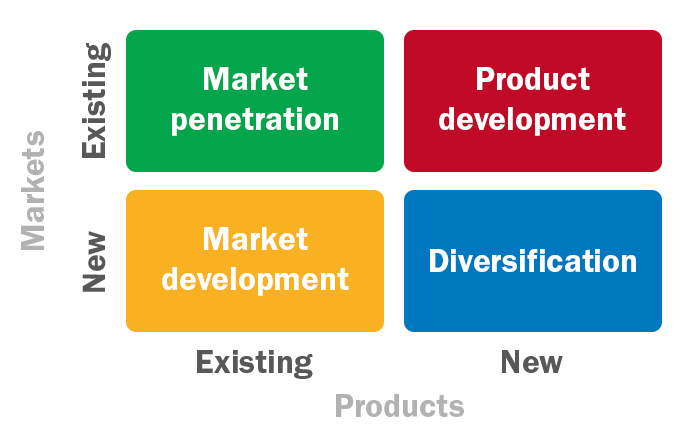Business Acumen: Tunnock's, diversification and the Ansoff Matrix

Business Acumen Lecturer, Graham Foster, explores the strategic concepts behind the Tunnock's brand and their collaboration to launch “Metric Tunnox”.
Tunnock’s is a Scottish brand known for tea-break favourites such as its Snowballs and Teacakes, but it recently announced the launch of a sweet stout, with a relatively high alcohol content of 9.5%. ‘Metric Tunnox’ is sold in a gold and red striped can that evokes the very recognisable branding of Tunnock’s Caramel Wafers. This was created in collaboration with Glen Affric Brewery and The Craft Beer Channel.


The TC Business Acumen course is largely focused on the experiences and needs of start-up enterprises, however, there comes a point, both for new businesses and for well-established brands like Tunnock’s, where they need to answer the question, ‘what next?’.
The Ansoff Matrix
Business Acumen introduces an ideal tool to help a businesses think through this decision. This tool is known as the ‘Ansoff Matrix’ (see below):

Ansoff’s Matrix considers decisions about business development and growth by considering two questions:
- Should we focus on existing products (which include services) or seek to develop new products?
- Should we focus on our existing markets, or seek to develop new markets?
These two questions, in combination, create four options.
1. Market penetration
Firstly, a business could seek to grow by selling more of its existing product in markets where it already competes. This is known as market penetration. For a business like Tunnock’s, that would entail promotional activities like advertising campaigns and discounting to gain market share, at the expense of rival snack brands.
This can be very challenging, as competition may be intense, but it is seen as relatively low risk as the business will know its own products well and should also have a good understanding of its current and target customers.
2. Product development
Product development means developing a new offering for a market that it is already familiar. For a business such as Tunnock’s, that would mean researching, developing, testing and eventually launching a new snack. There may be a lot of fixed costs spent in development, promotion and production capacity, but it has the advantage of refreshing the portfolio of products and keeping the brand fresh and relevant.
3. Market development
Market development means taking an existing product into a new market. This could entail geographic growth and selling into new regions or countries. Alternatively, it could involve targeting new demographics by, for example, promoting a product to new age groups. This may be costly due to promotional activities and the need to build up capacity.
One of the key risks is that the business may lack a detailed understanding of the needs and wants of customer groups that competitors may have been serving for decades. The difficulties experienced by Tesco in breaking into the Chinese market, with their eventual withdrawal in 2014, shows how hard this move can be even for the best-resourced businesses.
4. Diversification
But the riskiest option is generally seen as being diversification, as this embraces the dual challenges of product and market development in one bold step.
The launch of Metric Tunnox is an example of diversification as confectionery snacks and craft beer are quite distinct products and the markets for each are also distinct in the way they operate, not least because craft beer cannot be sold to children.
Collaboration
One of the ways in which businesses can overcome the risks of product and/or market development is through collaboration. In a business collaboration, different parties may be able to contribute complementary elements to a new venture.
For example, Tunnock’s may not have the technical knowledge required to make craft beer, or a detailed knowledge of customer tastes or trends in that market, but its collaborative partners do, and Tunnock’s can offer a strong retail brand with wide recognition among consumers.
Although Tunnock’s is clearly a well-established business, this lesson may be particularly relevant to start-up businesses who are likely to lack the resources required to develop or acquire the expertise or capacity required to develop new products or enter into new markets on their own.
